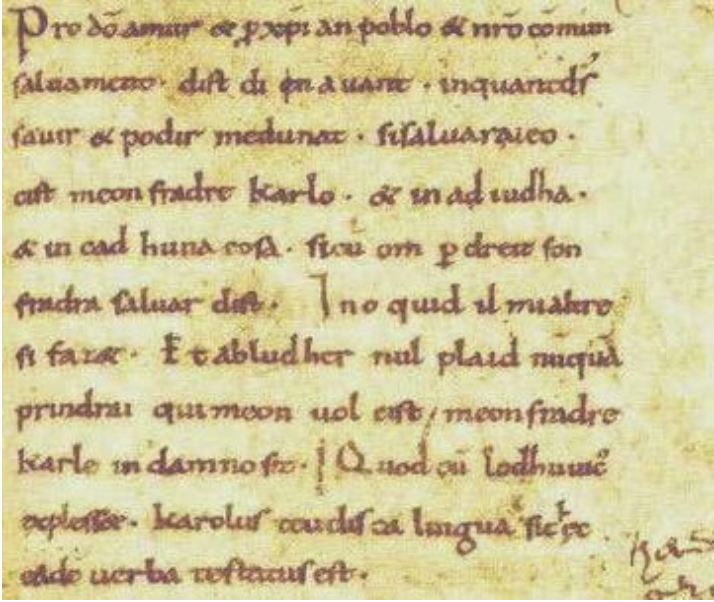Albert Uderzo, the co-creator of France’s most popular comic series Astérix, passed away on March 24, 2020. Mourning Uderzo, Emmanuel Macron said that France had lost “one of this century’s most creative imaginations.” Hundreds of readers wrote testimonials about the way Uderzo’s work had changed their lives on the Astérix fansite. “For more than 60 years,” wrote the site’s creators, “Astérix has brought pleasure and profound joy to millions of readers around the world.”
While this period of confinement is difficult, it gives us the opportunity to spend more time reading and reflecting about what’s important to us. This is the perfect moment to celebrate the beloved characters Astérix and Obélix, who, as Uderzo’s fans put it, “continue to spread values of tolerance and perseverance throughout their adventures.” If you’re a fan of Astérix, now is the time to revisit some of your favorite stories about le petit Gaulois. And if you’ve never read the comics, we invite you to join us in paying homage to Uderzo by learning about his work. Below, we celebrate the series’ enduring humor and optimism, as well as its ability to bring people from all over the world together.
By Sophia Millman
Goscinny and Uderzo: A Beautiful Friendship
Scénariste René Goscinny and dessinateur Albert Uderzo came up with the idea for their tiny, fearless hero Astérix in 1959. After publishing a few Astérix comic strips in the newspaper Pilote, the two collaborated on their first book, Astérix le gaulois, in 1961. Between 1961 and 1977, they created 23 Astérix books. Up until his death, Goscinny had always written the stories, but when he passed away in 1977, Uderzo took over as both author and illustrator. Uderzo continued to sign each Astérix book with Goscinny’s name, and if that isn’t the sign of une belle amitié, we don’t know what is. In a recent interview, Goscinny’s daughter said, “My father and Uderzo were more than inseparable. The dictionary definition of ‘friendship’ could simply be their two names.”
- Watch a 1968 interview with the two friends here!
- Want to learn more about Uderzo? Read these ten surprising facts about him in French!
What to Know about the Books and Where to Start Reading
“Nous sommes en 50 avant Jésus-Christ. Toute la Gaule est occupée par les Romains… Toute? Non! Un village peuplé d’irréductibles Gaulois résiste encore et toujours à l’envahisseur.” So begins the description of the first Astérix book. Translation: It’s 50 BC. All of Gaul (which will become modern-day France) is occupied by the Romans… Except for one small village populated by die-hard Gauls who resist the invader. It turns out that these Gauls possess a magic potion which gives anyone who drinks it superhuman strength.
The series revolves around two Gauls, Astérix and Obélix, but includes other recurring characters like the dog Idéfix. Why do all the Gallic characters names end in -ix? Well, Americans don’t learn about him, but every French child knows of the famous Gallic rebel leader called Vercingetorix. (Not sure how to pronounce that? Listen here!) All the Gauls’ names include that -ix suffix, and their names are also puns. Idéfix = idée fixe, a French way of saying “obsession.” And that’s just one type of linguistic pun that appears throughout the series! If you want to challenge yourself and read the books in French, you should check out this guide that explains many of the jeux de mots (puns) you’ll find.
- Which Astérix book should you read first? The first volume is of course a good start because it introduces you to the characters, but readers’ favorites are Astérix et Cléopâtre, Le Tour de Gaule d’Astérix, and Astérix chez les Bretons.
- Are you curious about the historical facts that Astérix is based on? Listen to this brief FranceCulture episode about the politics behind the series’ representation of French history.
- Interested in learning more about the series’ puns and how they are translated into English? Read this article!
Astérix’s Best References
While you might think that the Astérix cartoons were written for children, many of the series’ jokes are in fact targeted at adults. For instance, there are tons of references to French politics as well as classic works of art and literature. The character Preposterus, who appears in Obélix et Compagnie, was based on Prime Minister Jacques Chirac, who would later become president. One of the series’ best parodies appears in Astérix légionnaire, in which Gericault’s The Raft of the Medusa is transformed into a raft for pirates. And here’s another, more obscure reference: if you’re a fan of author and director Marcel Pagnol, you might notice that the café that appears in Le Tour de Gaule is an exact replica of the one in Marius. Apparently, when Pagnol realized that Le Tour de Gaule was filled with allusions to his work, he exclaimed, “Now I know my work will be immortal!”
- You can find a list of cultural allusions in Astérix here.
- Just as Uderzo once rendered homage to many illustrators, France’s most famous artists are now paying him homage.
Why does Astérix remain so popular around the world?
While American readers are more likely to be familiar with the Tintin comic series, Astérix has always been more popular among francophone audiences. When René Goscinny died in 1977, one French critic wrote that “it was if the Eiffel Tower had fallen down.” In 1969, two-thirds of the French had read at least one Astérix book, and by the time of Goscinny’s death more than 55 million copies of his books has been sold. And here’s another crazy fact: the first French satellite launched into space in 1965 was called Astérix! Today, fans of the series can even visit Parc Astérix, and Astérix et Obélix: Mission Cléopatre is the fourth biggest French box-office hit of all time.
Astérix has been translated into over 100 languages and sold 370 million copies worldwide. Why does this symbol of France’s cultural heritage perform so well internationally? Some critics speculate that it’s because the story is about the underdogs succeeding: against all odds, the Gauls continue to thwart the ever powerful Roman Empire. In an article about the series’ success, journalist John Lichfield argues that the answer might be even more simple. “Astérix is, above all, a story of two beautiful friendships, first between Astérix and Obelix and second between their creators, Albert Uderzo… and René Goscinny,” he writes. Uderzo, whose parents were Italian, and Goscinny, who came from a Polish-Jewish family, were able to create a story that is decidedly French, yet whose message has universal appeal.
- What’s great about Astérix is that the series contains lessons for almost all occasions. This fun French Huffington Post article called “Coronavirus: Les cinq leçons d’Astérix et Obélix pour survivre au confinement” gives you tips for getting through the virus!
- And speaking of the virus, did you know that there’s a character in Astérix named Coronavirus? Check out an article about him here.





